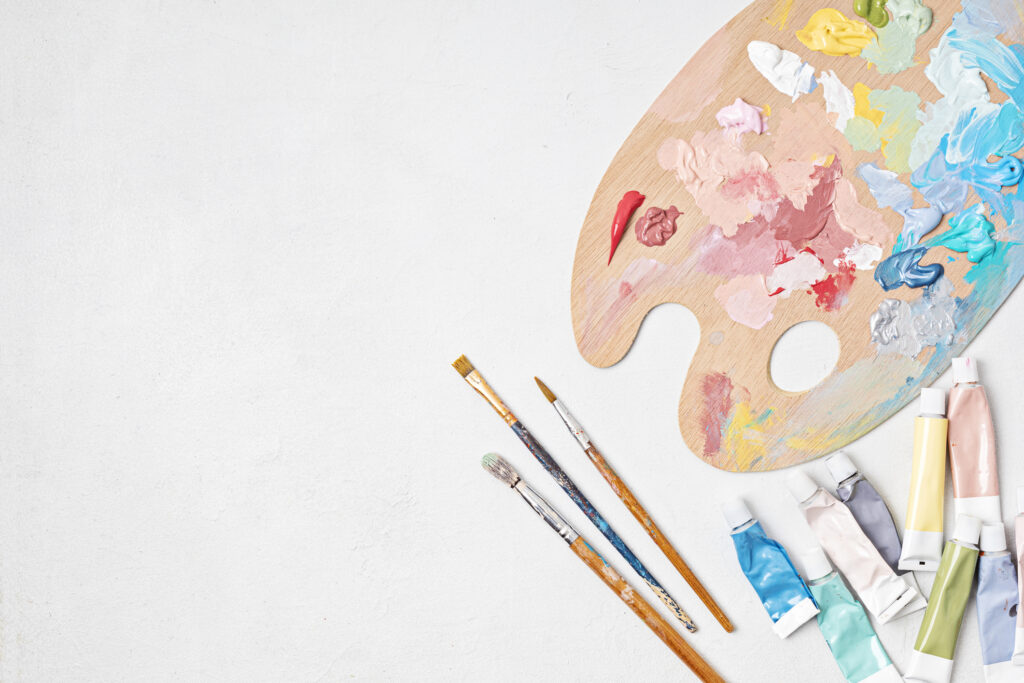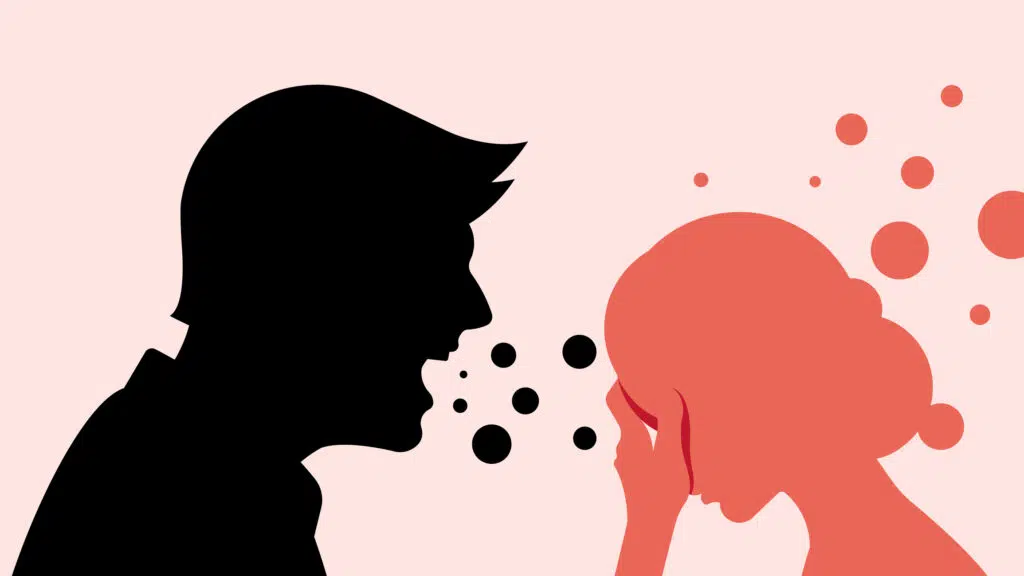Healing through Creativity: Exploring the Transformative Benefits of Art Therapy for PTSD

Art therapy can be a powerful tool for people healing from PTSD. Creative expression and psychology combine to offer a different way to access, process, and explore complex and traumatic experiences and feelings. In this article, we talk about how art therapy affects mental health and the benefits of art therapy for PTSD in the trauma healing process.
Understanding PTSD And Its Impact On Mental Health
Post-traumatic stress disorder or PTSD is a mental health condition that’s caused by experiencing or witnessing a traumatic event or a series of events, such as:
- Natural disasters
- Sexual assault
- Bullying
- Serious accidents
- War or combat
People with PTSD experience intense symptoms often relating to the traumatic event. This could include flashbacks, nightmares, sadness, fear, anger, and detachment from others. The psychological impact of PTSD is serious, and it can severely impact someone’s ability to function at work or perform basic day-to-day activities.
What Is Art Therapy?
Art therapy is a type of psychotherapy that uses art as the main mode of expression, together with talking to an art therapist. You can use different types of art like:
- Sculpture
- Drawing
- Painting
- Collage
It’s an integrative treatment approach that taps into psychological techniques and creative processes. Art therapy is based on the idea that creative expression can be a tool for trauma healing and encourage well-being and mental health.
Art therapy aims to help patients access, interpret, express, and ultimately resolve thoughts, feelings, and emotions. When you can’t find the words to express how you’re feeling or you’re struggling to speak about an experience, you communicate with your therapist through art. As you explore self-expression through art, the goal is to find new ways to cope and restore your sense of self.
Many people use art therapy to treat a range of mental health conditions, including:
- Depression
- PTSD and trauma
- Eating disorders
- Dementia
- Bereavement or loss
How Art Therapy Affects The Brain And The Body
Research into art therapy continues, but growing evidence shows that art enhances brain function by affecting emotions, brain wave patterns, and the nervous system. Art can also increase serotonin levels, sometimes known as the happy chemical.
Evidence suggests that art therapy can also help to lower stress and anxiety. By no means do you have to be any good at art to appreciate the benefits. All ages and skill levels can use art therapy, including children and teens.
The benefits of art therapy appear to go beyond mental health; research shows that creative expression may also have physiological benefits, such as:
- Reducing blood pressure
- Lowering stress levels
- Maintaining immune function
The Benefits Of Art Therapy As A Powerful Healing Tool For PTSD
Creative expression allows people with PTSD to use art as a form of communication. When reliving trauma and struggling with PTSD, art therapy can help people begin to process and heal without having to rehash traumatic experiences.
The Role Of Art In Processing Trauma And Emotions
Instead of talking to a therapist about trauma, individuals can use art to describe their feelings without uttering a word. If you’re finding it hard to talk about your trauma or don’t even know where to start to put it into words, individuals can use art therapy as a coping strategy and a tool to communicate. An individual may start to feel emotional release through art therapy and begin processing traumatic experiences.
Art therapy allows you to retain separation from a terrifying or traumatic experience while giving you a voice. It can help survivors access, explore, and experience feelings, thoughts, and memories when words are just not enough.
One study found that art therapy alongside cognitive process therapy (CPT) in combat-related PTSD improved trauma processing. Veterans in the trial considered art therapy to be an important of their treatment because of the following benefits:
- Created healthy distancing
- Improved trauma recall
- Enhanced access to emotions
Promoting Self-Exploration And Empowerment
Many people with PTSD can find themselves feeling disconnected from their bodies. Typically, this results from an individual being physically threatened or feeling unsafe during a traumatic event or series of events. Learning to reclaim your body and feel safe again is an important part of treatment for PTSD.
By creating distance between the trauma and the individual, art therapy can help people to process their trauma away from the body. It can create a safe space to access physical experiences and emotions while allowing an individual to feel more grounded.
Interestingly, art therapy seems to help individuals slowly handle emotions at a speed that’s manageable and gives them the chance to organize thoughts and feelings. Making art is a healthy way to encourage positive emotional regulation and self-expression.
Art therapy can help people with PTSD tap into a non-verbal form of communication to explore how they feel in a completely different way. It’s a holistic approach to treatment that utilizes psychotherapy and creative expression to promote healing.
Using Art As A Coping Strategy
Art can be a valuable tool for helping people to address and deal with emotions. Using art as a coping strategy can help you focus on the present and start to process difficult emotions. For someone dealing with stress, anxiety, depression, or trauma, art therapy can help you to explore challenging emotions in a healthy way.
Art therapy for PTSD can also help individuals to start imagining a more hopeful, positive future. When an individual starts to believe that change is possible and there is a safe space to process traumatic experiences, there’s hope for a brighter future. Finding healthy coping strategies for PTSD can help ease symptoms while healing and processing trauma. Good coping takes time and practice, but it is entirely possible.
Incorporating Art Therapy Into Treatment Plans For PTSD Recovery
Treatment for PTSD and trauma therapy can include a range of approaches and techniques like:
- Virtual reality exposure therapy (VRET)
- Cognitive-behavioral therapy (CBT)
- Meditation or relaxation techniques
- Psychotherapy (talk therapy)
- Couples or group therapy
- Life coaching
Along with other therapies and, if necessary, medications, art therapy helps people with PTSD process trauma and start to heal. Art can be used as a treatment tool for PTSD and presents a non-verbal approach to accessing emotions and exploring trauma that’s not reliant on a person reliving the experience over and over again.
In an art therapy session, an individual would use materials to create something that reflects their inner self and their world. The art therapist would then observe and help the individual try to interpret their art and encourage them to explore their thoughts and emotions. You may choose to make art in silence or talk about the art with your therapist as you go.
Typically, most art therapy sessions involve a post-art-making section where you speak to your therapist about your art, the process, and what came up for you. You can also talk about goals you may have or concerns before ending the session with some next steps from your therapist that apply to your unique situation.
If you’re struggling with trauma or going through a difficult time, the compassionate therapists at Thriving Center of Psychology can help. Book an appointment online or contact one of our offices. We have offices in most major cities, including NYC, Fort Lauderdale, and Boston.

Understanding Impostor Syndrome: Breaking Free from Self-Doubt
Imposter syndrome can make you feel like a fraud with no confidence in your abilities. You’re not alone; so many people feel like this. The good news is that you can break free from imposter syndrome and overcome self-doubt; here’s how.

Supporting a Loved One with Mental Illness: Practical Tips and Resources
There isn’t one perfect way to support a loved one with mental illness. How you care for someone will depend on you and the person you support. Mental illness can affect all aspects of a person, from mood to behavior. It can come as a shock when a loved one is diagnosed with a mental illness.

Is My Relationship One-Sided?
Do you feel like you’re doing all the work in a relationship? When a relationship is one-sided, it can create stress and conflict. If one partner invests more energy and effort to make the relationship work, it creates an imbalanced dynamic that can be draining in the long haul.

How To Recover From Burnout?
Manageable and short-term stress can increase alertness and give you the focus to hit a tight deadline. But left unchecked, chronic stress can result in burnout, leading to complete physical, mental, and emotional exhaustion.
